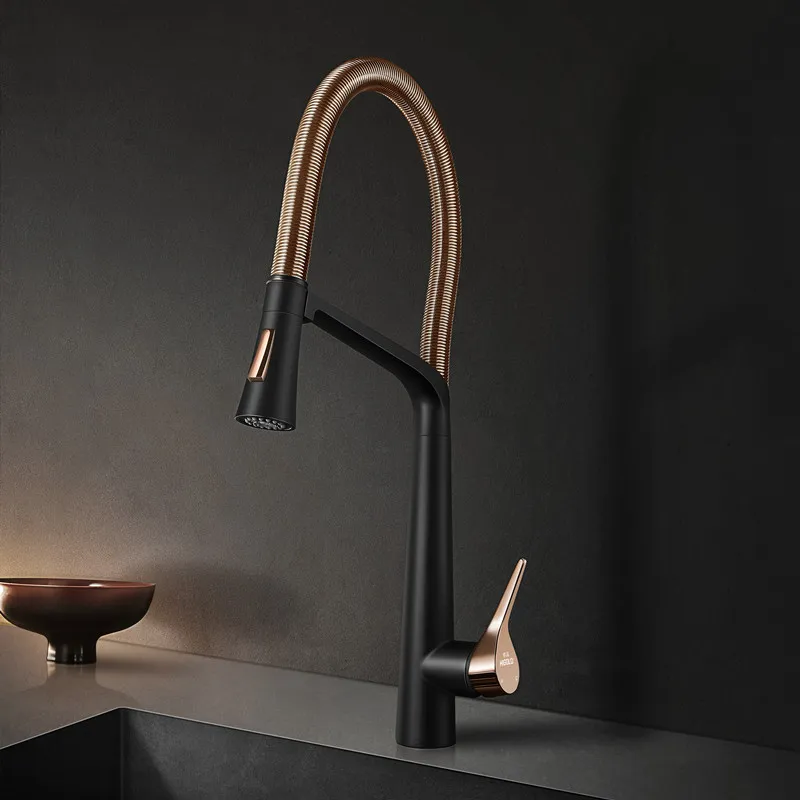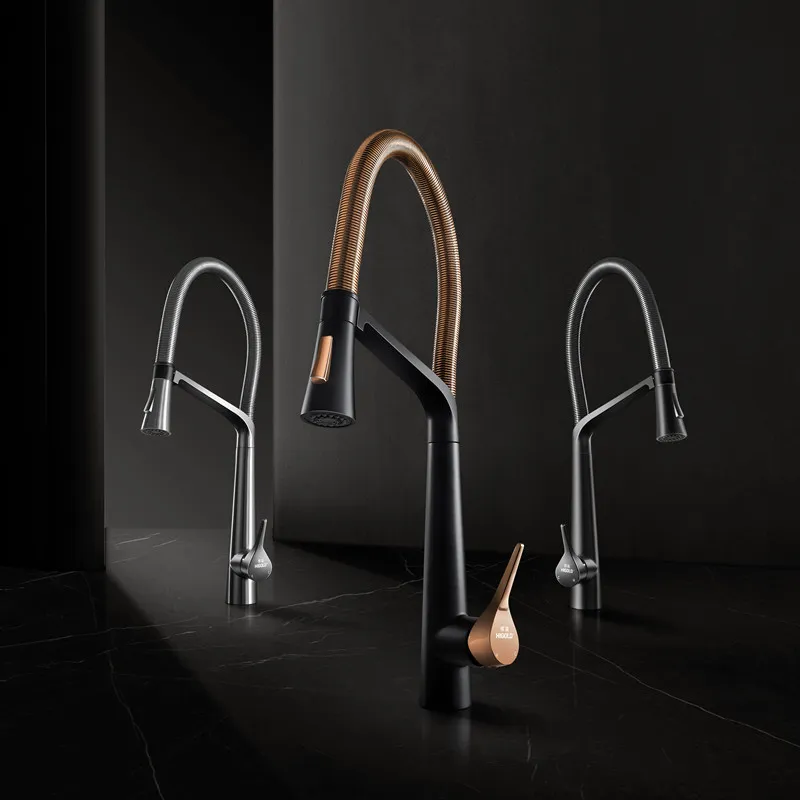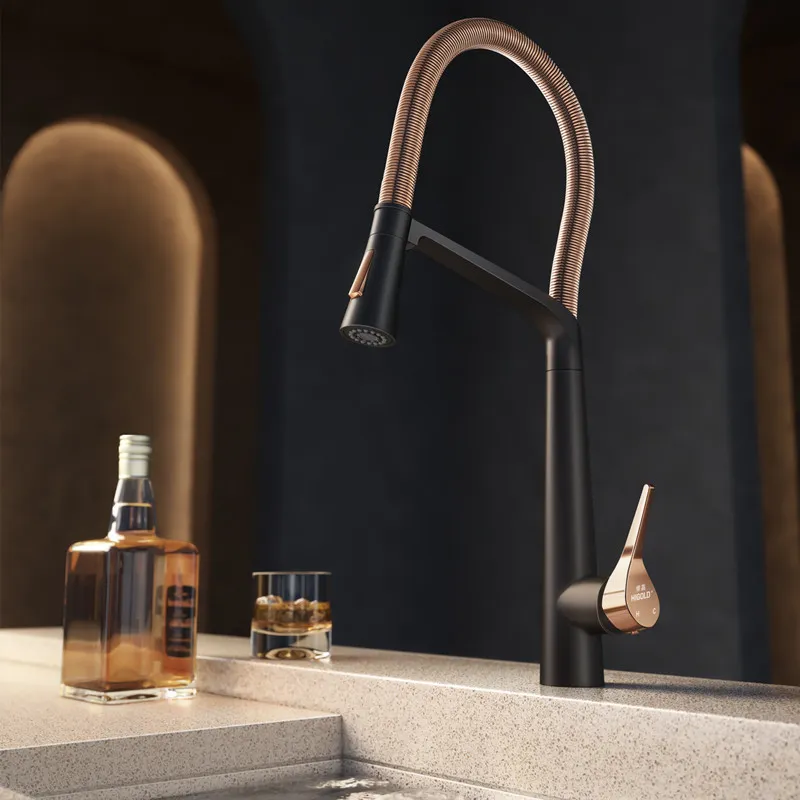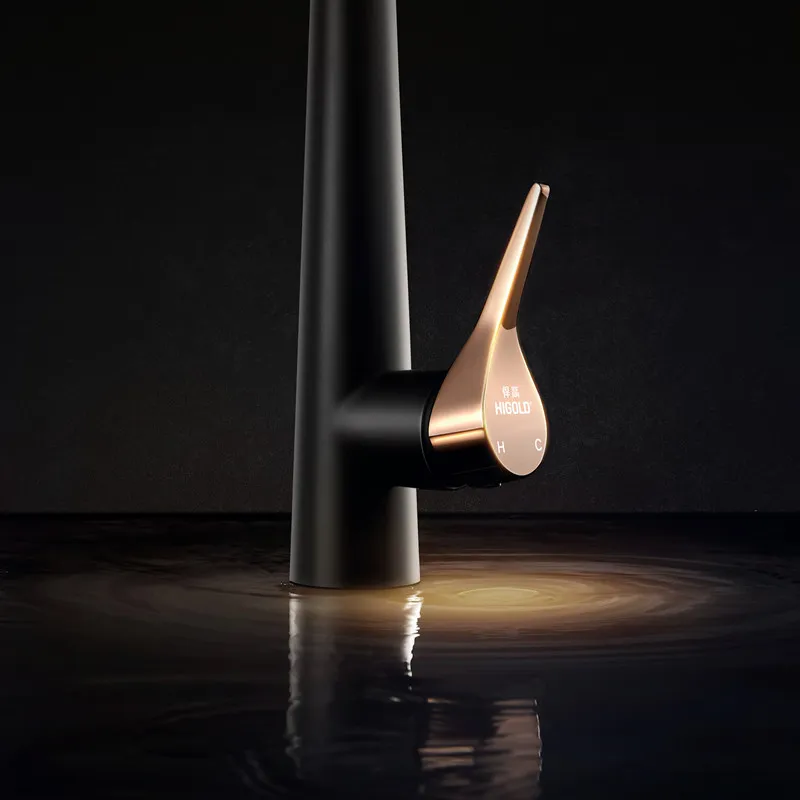Kitchen sink faucet is an indispensable household facility in our daily life. It silently provides us with water every day to help us complete various tasks such as cooking and cleaning. However, as a frequently used device, the service life of the faucet is usually a topic of concern. The life of a kitchen sink faucet depends not only on its material, brand and frequency of use, but also on various factors such as daily maintenance, installation method and water quality.
So, how long is the service life of a kitchen sink faucet? How to extend its service life and avoid unnecessary repair and replacement costs? This article will deeply analyze the service life of a kitchen sink faucet from multiple angles to help consumers make a more informed choice.

How long is the service life of a kitchen sink faucet?
To answer the question of the service life of a kitchen sink faucet, we first need to understand the main factors that affect its service life. These factors can be divided into the material of the faucet, brand quality, frequency of daily use, installation and maintenance, use environment and water quality.
1. Faucet material
The material of the faucet is one of the key factors affecting its service life. Common materials for kitchen sink faucet on the market include stainless steel, copper, aluminum alloy, plastic, etc. The durability and lifespan of faucets made of different materials are very different.
● Stainless steel faucet: Stainless steel faucet has become the first choice for high-end kitchen sink faucet due to its strong corrosion resistance, high temperature resistance, and wear resistance. Generally speaking, the service life of stainless steel faucet is between 15 and 20 years, which is suitable for long-term use.
● Copper faucet: Copper faucet usually has good corrosion resistance and oxidation resistance, but compared with stainless steel faucet, it is more susceptible to water quality, especially in hard water environment, it may have problems such as scaling. The service life of copper faucet is usually 10 to 15 years.
● Aluminum alloy faucet: Aluminum alloy sink faucet is relatively light. Although it is cheap, its durability and corrosion resistance are not as good as stainless steel and copper, and its service life is generally 5 to 10 years.
● Plastic faucet: Plastic faucet is favored by some consumers because of its low price, but its durability is poor, especially under high temperature or frequent use, it is more prone to aging and breaking. The service life of a plastic faucet is generally 2 to 5 years.
2. Brand quality
Brand quality is also an important factor in determining the service life of a kitchen sink faucet. Faucets from well-known brands usually have strict control over material selection, manufacturing processes and quality control, and the service life of the products is often longer. However, faucets from some unknown brands may have problems such as unreasonable design and substandard quality, which greatly reduces the service life. Therefore, when purchasing faucets, consumers should choose brands with good reputation and good reputation to ensure the durability of the faucet.
3. Daily use frequency
The frequency of use of a faucet directly affects its service life. The kitchen sink faucet needs to be used frequently in daily life, especially in large families or families who like to cook big meals. The sink faucet is used more frequently, which may increase its wear and tear. Therefore, frequently used faucets have a shorter lifespan to a certain extent than those with less frequent use.
4. Installation and maintenance
The installation method and daily maintenance of the kitchen sink faucet directly determine its service life. Improper installation may cause problems such as leakage and poor sealing at the faucet connection, thereby shortening the service life of the faucet. In addition, in daily use, if the faucet is not cleaned regularly, scale, stains and other substances will accumulate on the surface of the faucet, which may affect the normal operation of the faucet and reduce its service life.
5. Water quality
Water quality also has an important impact on the life of the kitchen sink faucet. Hard water contains a large amount of minerals and mineral salts, which are easy to deposit inside the faucet, causing the faucet to be blocked, corroded or even broken. In areas with poor water quality, the service life of the faucet will be relatively shortened. On the contrary, soft water has less impact on the faucet and can effectively extend the service life of the faucet.
6. Use environment
Environmental factors such as humidity and temperature in the kitchen will also affect the service life of the kitchen sink faucet. High humidity and high temperature environment can easily cause rust and oxidation on the surface of the faucet, especially metal faucets, which are easily affected by environmental factors. Therefore, the ventilation and dryness of the kitchen have a certain impact on the service life of the faucet.

What are the common faults of kitchen sink faucet?
Before understanding the service life of kitchen sink faucets, we also need to understand some common faucet failures so that we can find problems in time during use and avoid more serious damage.
1. Leakage problem
Leakage is one of the most common faults of kitchen sink faucets. Leakage may occur in the valve core, joints, water outlets and other parts of the faucet. Long-term leakage will not only waste water resources, but also cause water stains, mildew and other problems on the faucet and surrounding countertops, and even cause water damage. The cause of leakage is usually related to factors such as aging of the faucet's sealing gasket, wear of the valve core or poor water quality.
2. Poor water flow from the faucet
Poor water flow from the faucet is usually caused by scale or impurities blocking the faucet's water outlet or internal pipes. This situation is more common in areas with hard water quality. Failure to clean the kitchen sink faucet for a long time may cause the water flow to become thinner or even completely blocked. Regularly cleaning the inside and outlet of the faucet is an effective way to solve this problem.
3. Rust or corrosion on the faucet
The rust or corrosion on the surface of the kitchen sink faucet is usually caused by long-term exposure to a humid environment, or the water contains more minerals and chemicals, which causes the faucet surface to oxidize and corrode. Metal faucets, especially copper faucets, are more prone to such problems, affecting the appearance and service life of the faucet.
4. Faucet valve core failure
The faucet valve core is an important component for regulating water flow and water temperature. If the valve core fails, it may cause the kitchen sink faucet to fail to switch the water flow normally, or even cause problems such as unstable water temperature. The failure of the valve core is usually caused by internal scale accumulation or wear, especially in hard water environments.

How to extend the life of the kitchen sink faucet?
In order to extend the service life of the kitchen sink faucet, in addition to choosing the right material and brand, regular maintenance and care are essential. Here are several effective maintenance methods:
1. Clean the faucet regularly
Regularly cleaning the kitchen sink faucet is the key to keeping it working properly. Especially in hard water areas, faucets are prone to scale accumulation, affecting water flow and service life. You can use a special detergent or vinegar solution to regularly clean the faucet's water outlet, valve core and outer surface to avoid the accumulation of scale and stains.
2. Replace the sealing gasket and valve core
The sealing gasket and valve core inside the faucet will age and wear over time. Regularly checking and replacing these parts can avoid problems such as leaks and extend the life of the faucet.
3. Avoid excessive force on the faucet
When using the kitchen sink faucet, avoid turning the handle with excessive force, especially when adjusting hot and cold water. Excessive force can easily cause the valve core to wear and even damage the structure of the sink faucet, shortening its service life.
4. Avoid high-temperature water flowing through the faucet
Long-term use of overheated water flowing through the kitchen sink faucet may cause aging of the internal components of the faucet and even corrosion of the metal surface. Therefore, try to avoid using overheated water to flow through the faucet and keep the water temperature moderate.
5. Check the water quality regularly
Hard water is one of the important factors affecting the service life of sink faucets. In areas with hard water, it is recommended to install a water softener to slow down the accumulation of scale inside the faucet, thereby extending the service life of the faucet.

What is the replacement cycle of a kitchen sink faucet?
The replacement cycle of a kitchen sink faucet varies depending on the material and the environment in which it is used. Generally speaking, a high-quality stainless steel or copper faucet can last for more than 10 years under normal use and maintenance. Aluminum alloy and plastic faucets have a shorter lifespan and usually need to be replaced between 3 and 5 years.
Why Are Higold’s Kitchen Sinks Considered the Best in the Industry?
Higold's kitchen sinks stand out due to their unmatched quality and innovative design. Our stainless steel sinks are manufactured with cutting-edge technology, including robotic welding, laser cutting, and ultrasonic cleaning. These processes ensure consistency, durability, and ease of maintenance. As a manufacturer and supplier, we offer wholesale pricing and customized solutions to meet the unique needs of our clients, whether you're in residential, commercial, or international markets.


